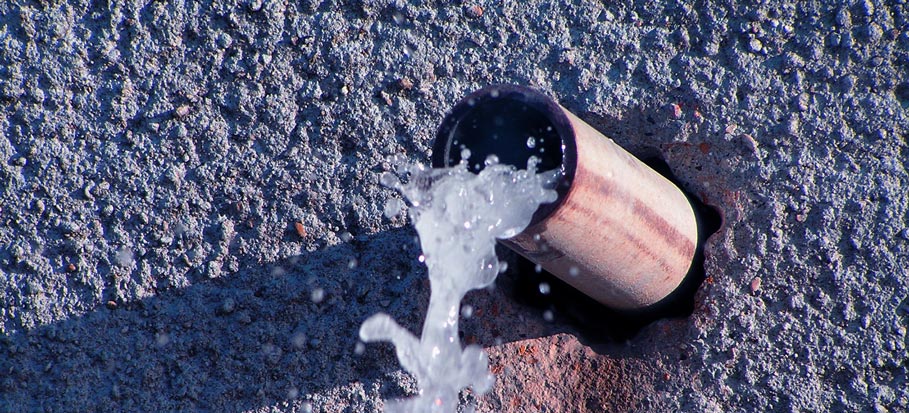Guide To Water Leak Discovery In The House
Guide To Water Leak Discovery In The House
Blog Article
This article in the next paragraphs in relation to Detecting hidden plumbing leaks is truly enjoyable. Read it for yourself and figure out what you think about it.

Early discovery of dripping water lines can reduce a possible catastrophe. Besides conserving you money, it will minimize the aggravation as well as irritation. The moment you discover a leakage, calling your plumber for fixings is the best solution. However, some small water leakages might not show up. If you can not identify it with your naked eyes, here are some hacks that assist.
1. Check Out the Water Meter
Every house has a water meter. Checking it is a surefire way that assists you uncover leakages. For beginners, switch off all the water resources. Ensure no one will purge, make use of the tap, shower, run the cleaning equipment or dish washer. From there, most likely to the meter and watch if it will change. Since no one is using it, there should be no activities. That suggests a fast-moving leakage if it moves. If you detect no changes, wait a hr or 2 and also inspect back once again. This means you might have a slow-moving leakage that might even be underground.
2. Check Water Intake
If you find sudden modifications, despite your intake being the exact same, it implies that you have leakages in your plumbing system. A sudden spike in your costs indicates a fast-moving leakage.
A constant increase every month, also with the very same practices, reveals you have a slow leakage that's also slowly rising. Call a plumber to thoroughly inspect your property, especially if you really feel a cozy location on your flooring with piping below.
3. Do a Food Coloring Examination
When it pertains to water usage, 30% comes from bathrooms. Examination to see if they are running correctly. Drop specks of food color in the container and wait 10 mins. There's a leakage between the container as well as bowl if the shade in some way infiltrates your dish throughout that time without flushing.
4. Asses Exterior Lines
Do not fail to remember to inspect your outdoor water lines too. Should water permeate out of the link, you have a loosened rubber gasket. One small leak can waste loads of water and spike your water costs.
5. Check as well as Examine the Circumstance
Homeowners should make it a behavior to examine under the sink counters and also also inside cabinets for any kind of bad odor or mold and mildew growth. These 2 warnings indicate a leakage so timely attention is required. Doing regular assessments, even bi-annually, can conserve you from a significant problem.
Inspect for stainings and damaging as most pipelines and also appliances have a life span. If you believe leaking water lines in your plumbing system, don't wait for it to intensify.
Early discovery of dripping water lines can alleviate a potential disaster. Some tiny water leakages might not be visible. Checking it is a surefire method that helps you uncover leakages. One small leakage can throw away tons of water and increase your water bill.
If you think leaking water lines in your plumbing system, do not wait for it to escalate.
WARNING SIGNS OF WATER LEAKAGE BEHIND THE WALL
PERSISTENT MUSTY ODORS
As water slowly drips from a leaky pipe inside the wall, flooring and sheetrock stay damp and develop an odor similar to wet cardboard. It generates a musty smell that can help you find hidden leaks.
MOLD IN UNUSUAL AREAS
Mold usually grows in wet areas like kitchens, baths and laundry rooms. If you spot the stuff on walls or baseboards in other rooms of the house, it’s a good indicator of undetected water leaks.
STAINS THAT GROW
When mold thrives around a leaky pipe, it sometimes takes hold on the inside surface of the affected wall. A growing stain on otherwise clean sheetrock is often your sign of a hidden plumbing problem.
PEELING OR BUBBLING WALLPAPER / PAINT
This clue is easy to miss in rooms that don’t get much use. When you see wallpaper separating along seams or paint bubbling or flaking off the wall, blame sheetrock that stays wet because of an undetected leak.
BUCKLED CEILINGS AND STAINED FLOORS
If ceilings or floors in bathrooms, kitchens or laundry areas develop structural problems, don’t rule out constant damp inside the walls. Wet sheetrock can affect adjacent framing, flooring and ceilings.
https://www.servicemasterbyzaba.com/blog/how-to-detect-water-leakage-in-walls/

Do you really like reading up on Hacks to detect leaks? Create a remark down below. We'd be glad to hear your views about this content. We are looking forward that you visit us again in the future. So long as you appreciated our page kindly remember to share it. We take joy in reading our article about Finding hidden leaks.
Report this page